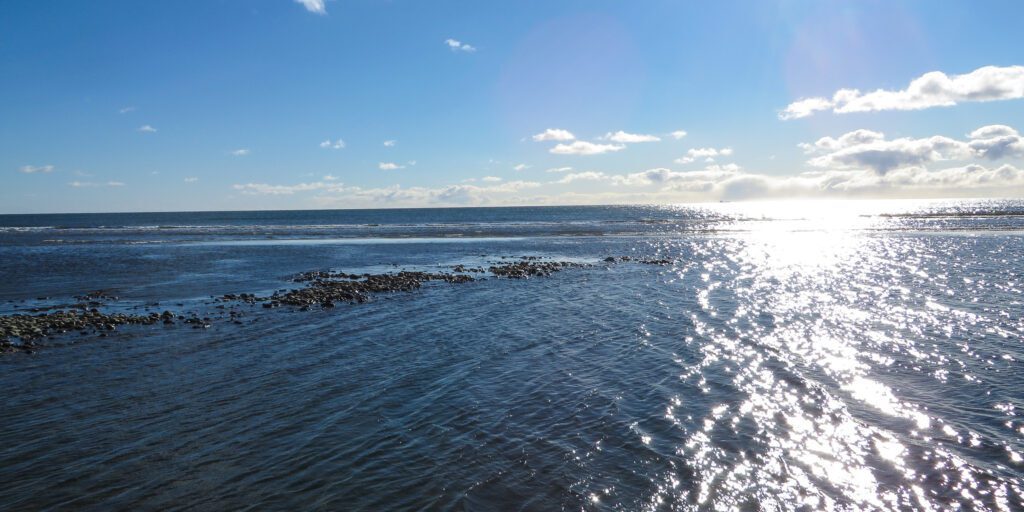Scientists say based on years of observations and data gathered in the Northern Bering Sea, as well as a recent research cruise, they can see warming waters and biological changes going further north. This seems to indicate a shift in the Northern Bering from one type of ecosystem to another.
“It’s like taking a balloon and you blow it up, squeeze the bottom of it, and this is the south. And what you’re doing is expanding it into the north.”
That was Jacqueline Grebmeier with the Maryland Center for Environmental Science. She has been studying areas south of St. Lawrence Island for the last 30 years. And although she hasn’t studied north of the island for as long, her research has concentrated on both areas which make up the Northern Bering Sea.
Grebmeier is mostly focused on the benthos, which is the flora and fauna that live on the bottom of the ocean. That includes animals in the sediments like crabs, clams, and worms. South of St. Lawrence Island, Grebmeier says there is a trend of statistically declining clam populations, but there is no trend yet further north.
Her hypothesis is that the Northern Bering Sea is changing from the bottom up. Grebmeier says some of the benthic organisms have moved ten to 20 kilometers north in recent years, and if they continue moving north, then the larger marine mammals that eat them, like walruses or whales, will also move.
“If they can, but you know the territory can only go from 100 meters to 100 meters, but they have a certain type of food they want to eat. So, like, gray whales really don’t want to be eating worms. I guess they could suck them up, but traditionally, they are always wanting these fat lipids, it’s like eating lobster versus eating some skinny thing.”
Through a network called the Distributed Biological Observatory (DBO), different teams of international scientists have measured and shared data from the Bering Sea for years. They focus on an array of factors like salinity, temperature, chlorophyll concentrations, and much more.
Several of these scientists, and Grebmeier, have also been paying attention to the retreating sea ice and how that is impacting the production of algal blooms, which provides a large food source for certain benthic animals.
In addition to these long-term studies, Grebmeier embarked on a research voyage to collect more data earlier this summer on a Canadian Icebreaker, the Sir Wilfred Laurier.
During her trip, Grebmeier studied gray whales’ feeding habits north of St. Lawrence Island, the areas where walruses eat in the Chukchi Sea that are being affected by sea ice loss, and the changing locations where diving seaducks could find ice to rest on.
Rick Thoman, a climate specialist with the University of Alaska–Fairbanks’ Alaska Center for Climate Assessment and Policy, says sea ice is currently moving north at a faster rate than ever recorded in the Chukchi Sea.
“From north of the Bering Strait to northwest of the North Slope Coast, (sea ice) is at record low levels. There is effectively no ice now in the Chukchi Sea within 150 miles of Alaska, and northwest of the North Slope Coast, the ice edge is a couple hundred miles or more away, and it’s only the end of July.”

One type of sea duck is the spectacled eider, which, according to Grebmeier, relies on sea ice for dancing, mating, and eating. She says eiders and even walruses’ food “cafeteria” is now located in areas north of St. Lawrence Island, when it used to be further south.
“That system is not what it used to be, let’s put it (that way). Without that sea ice there, I think there will be some production, only blooms once a year. And you don’t have that nice production that you get with sea ice algae, so that was really the carbon that kicked the system off. And so certain animals aren’t going to have their type of food. It would be like having hamburgers instead of steak.”
Grebmeier and other scientists are observing cod, pollock, and other bottom-feeders coming up from the Southern Bering Sea and moving further and further north. This reinforces the belief that the thermal cold-water barrier south of St. Lawrence Island is gone.
To get an idea of how many of these warm water fish are moving into the Northern Bering Sea, the National Oceanic and Atmospheric Administration is conducting a bottom-trawl survey of waters in the north starting next week.
Grebmeier says this study and her upcoming research onboard the Coast Guard cutter Healy could help scientists identify ecosystem shifts and trends happening in the Northern Bering Sea.
Image at top: a summertime view from East Beach, Nome. Photo: Laura Kraegel, KNOM file.




